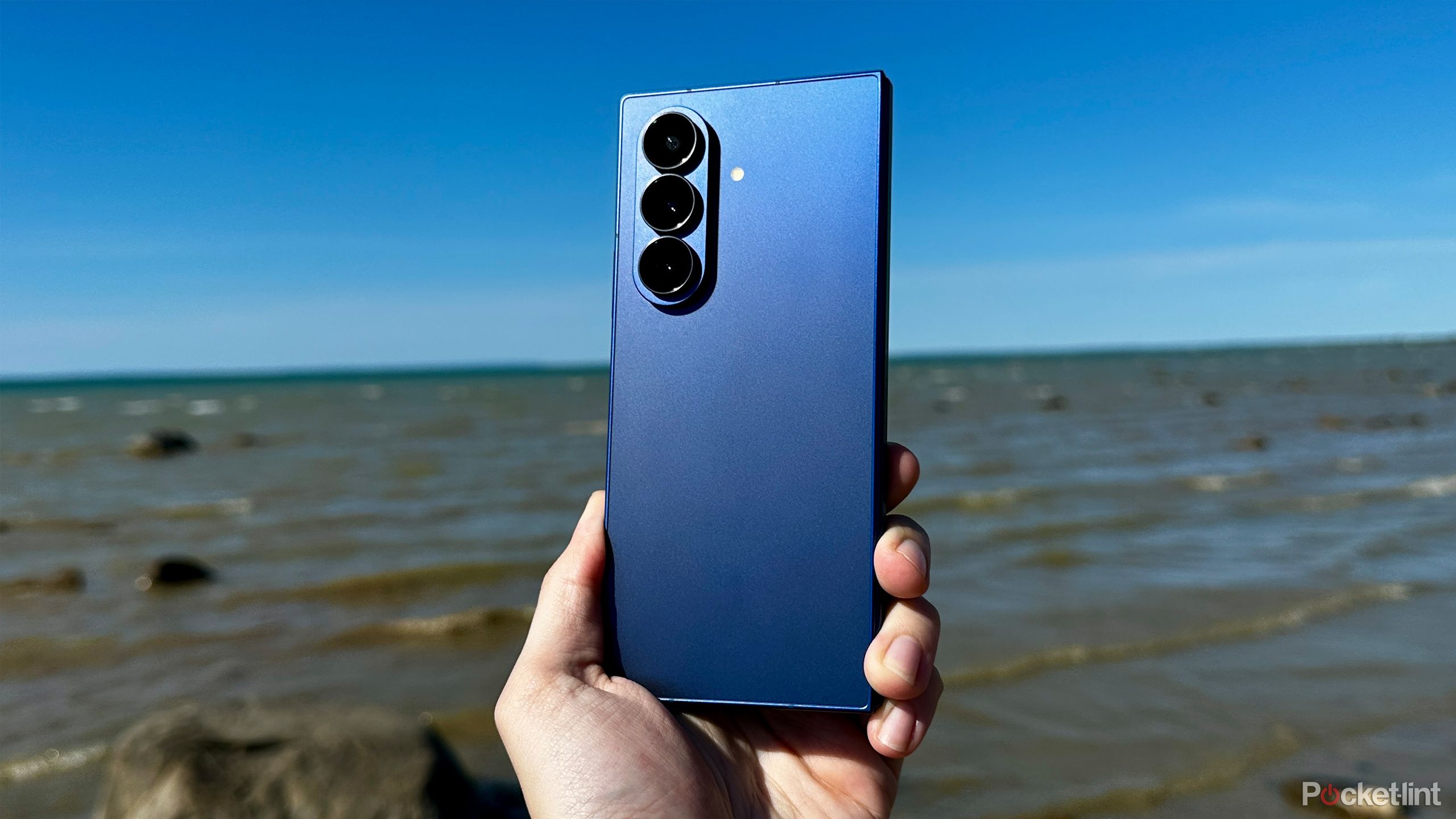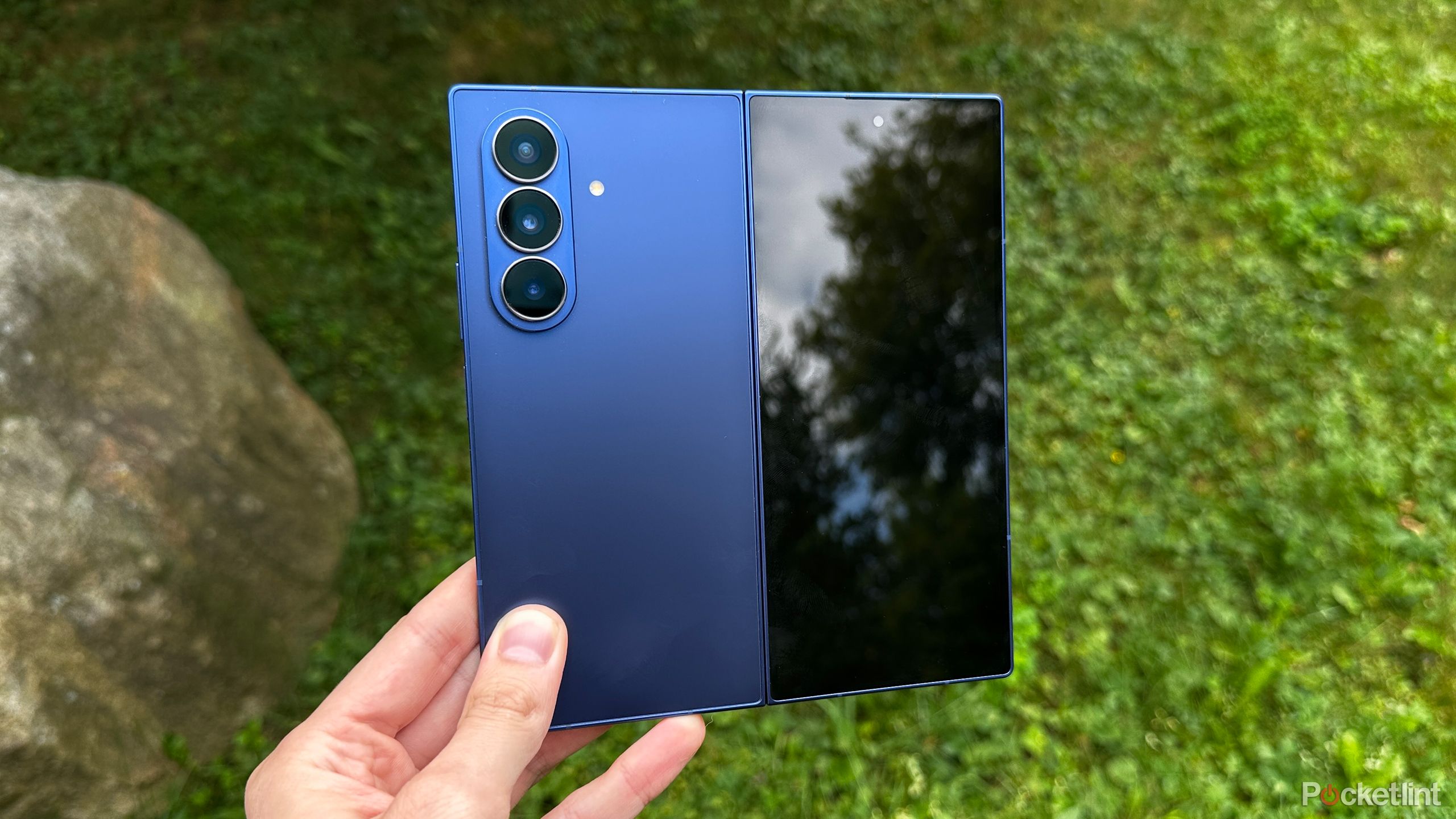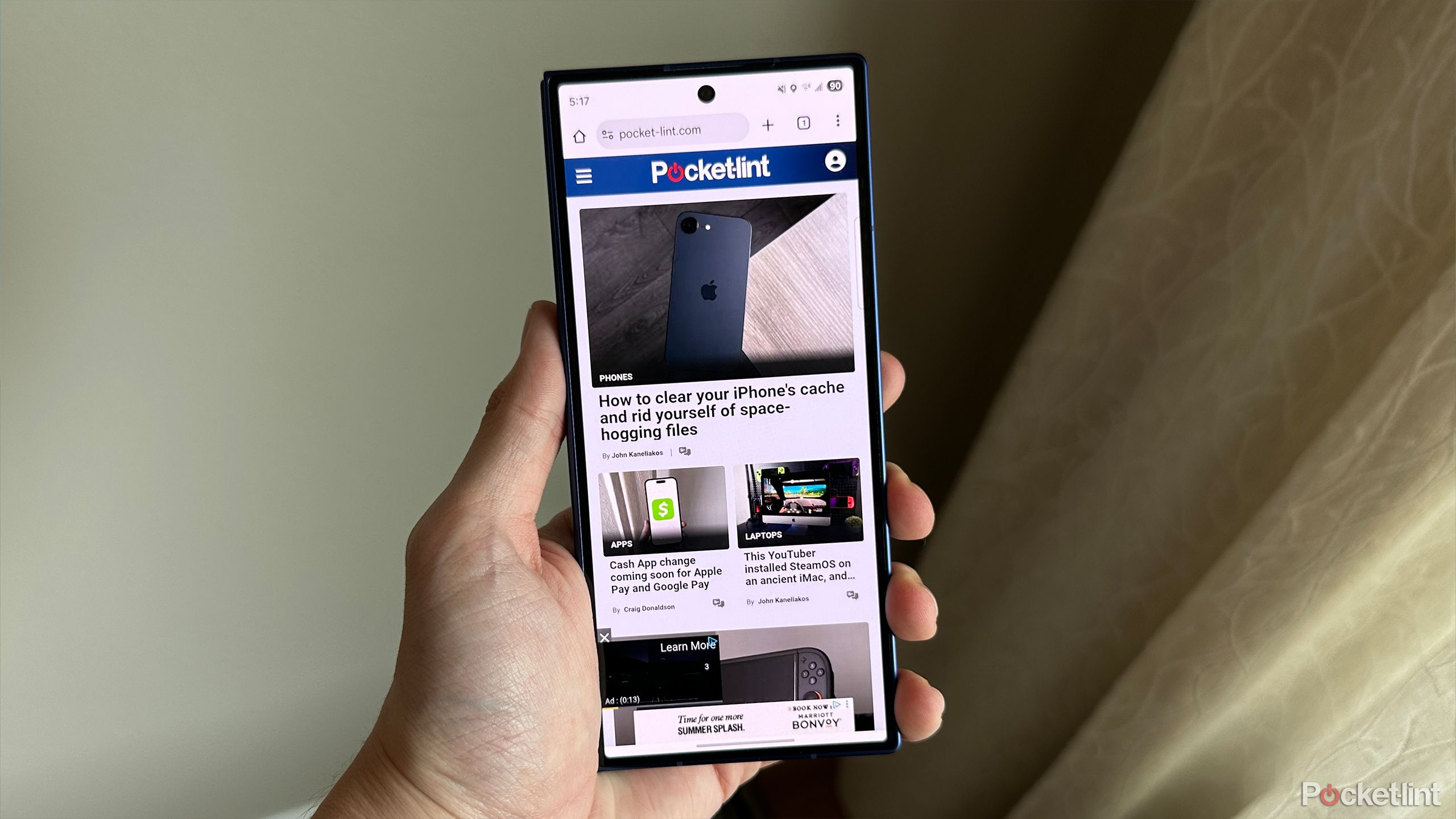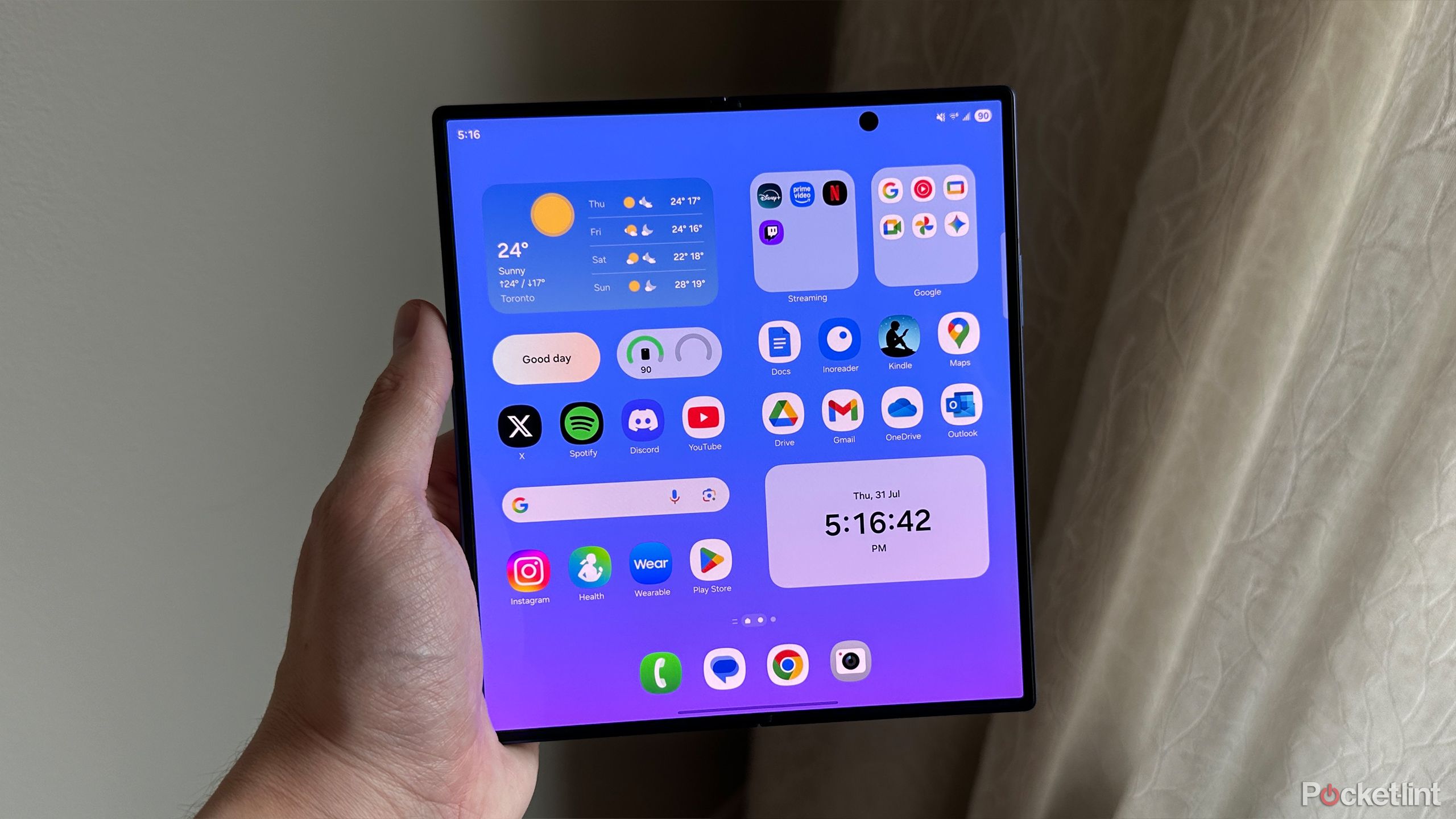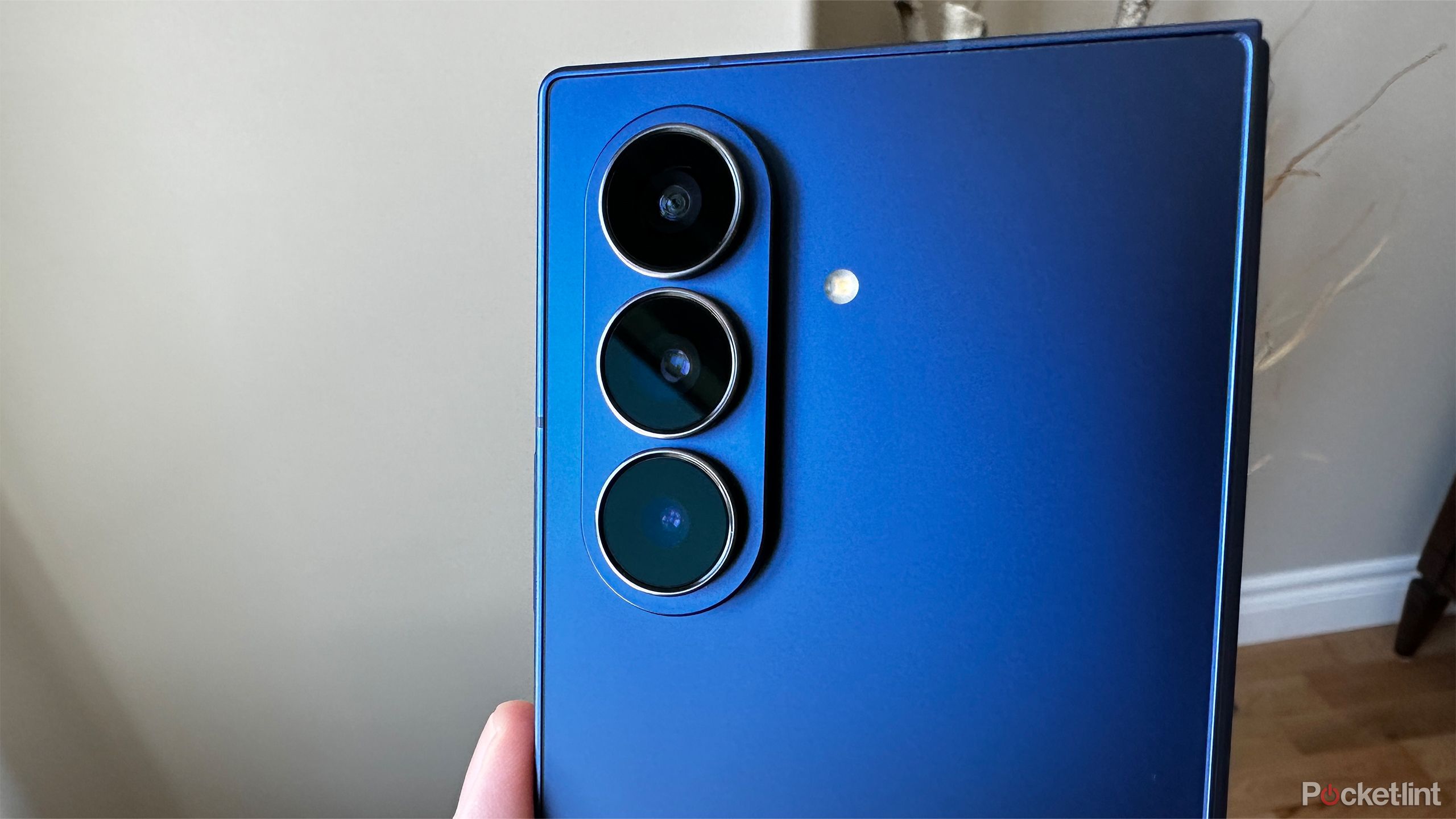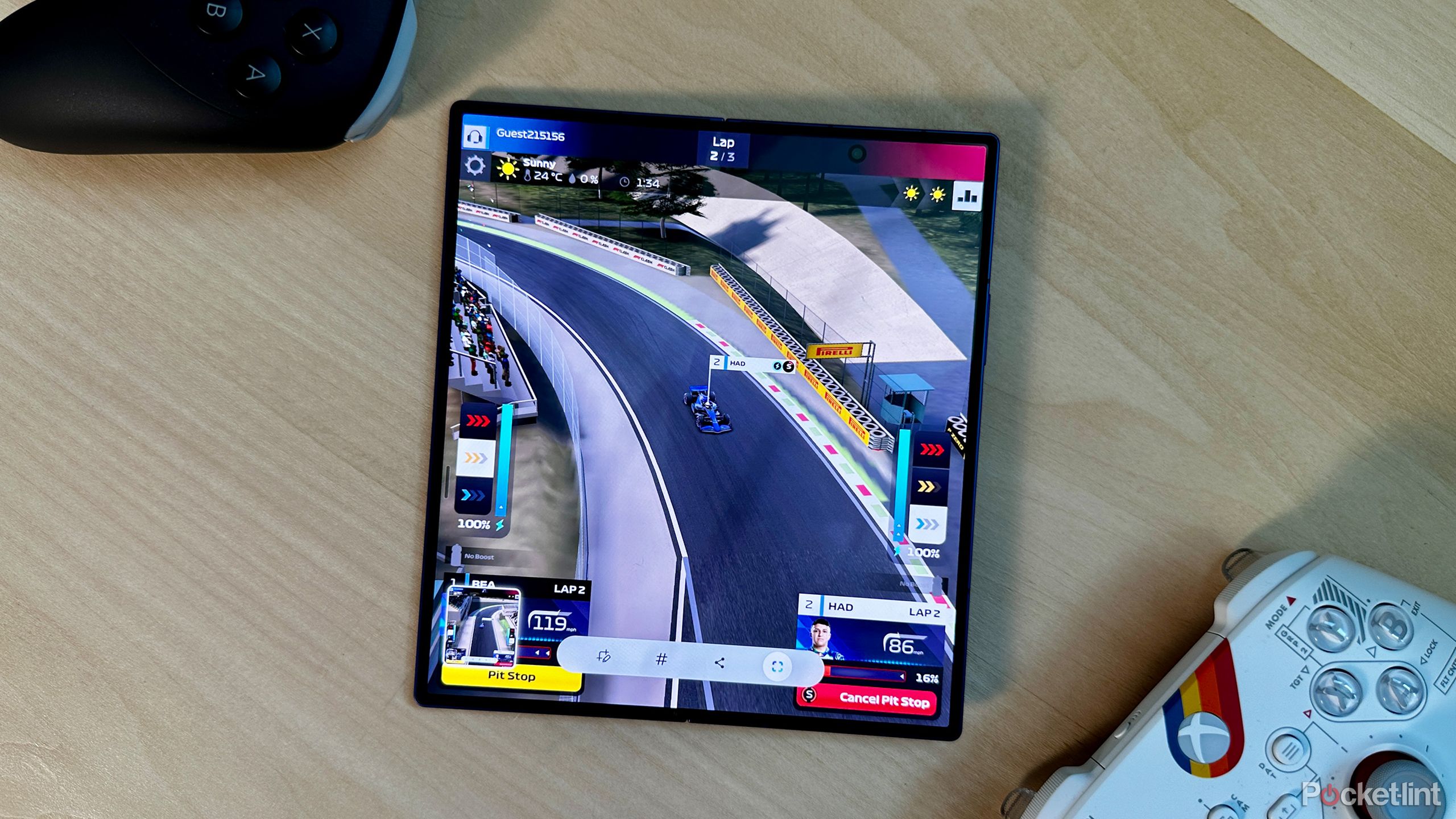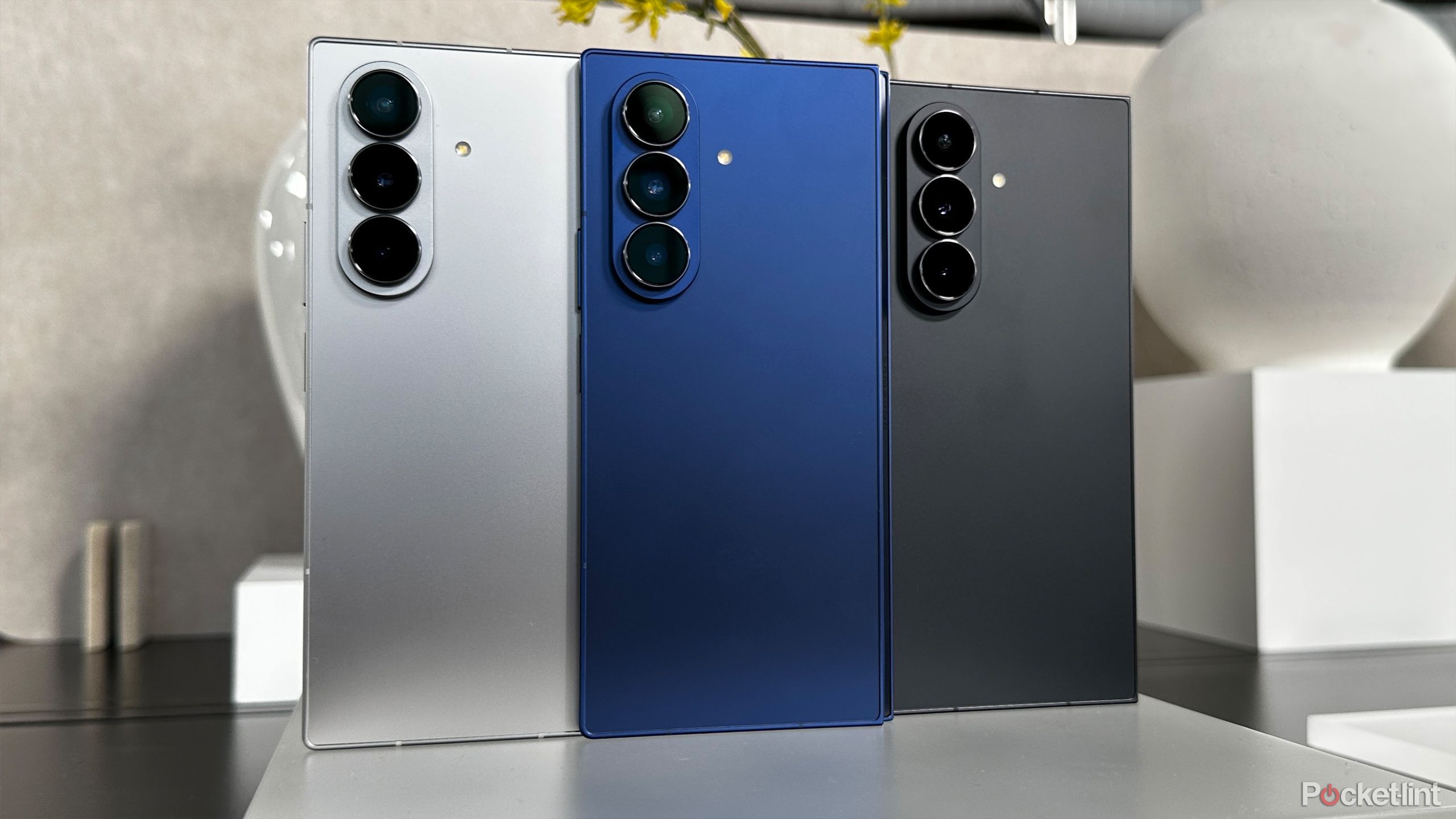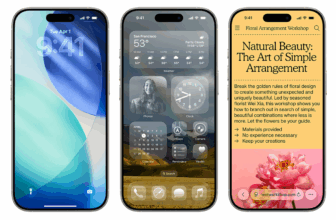Summary
- The Galaxy Z Fold 7 is Samsung’s best foldable yet, offering a thinner, lighter design and improved performance.
- It has a larger inner and outer display, and is equipped with the powerful Snapdragon 8 Elite processor, enhancing the user experience.
- Despite its steep price of $2,000, the Fold 7’s versatility and regular phone-like feel make it a compelling choice for foldable enthusiasts.
When I first held the Galaxy Z Fold 7 at Samsung Unpacked, I was instantly captivated. I’ve always found foldable phones fascinating, but I have never been genuinely impressed enough by one to make it my daily driver. After three weeks of using the Fold 7, Samsung’s newest book-style foldable, I’ve never been more sold on switching to a foldable phone permanently.
Compared to the Fold 6, which was an incremental upgrade from the Fold 5, the Fold 7 represents the most significant leap forward Samsung has made yet with its Fold series. It’s thinner, lighter, and more powerful than any previous Z Fold model.
But overall, what makes the Fold 7 so compelling — and why I’m struggling to put it down — is that it genuinely feels like you’re using a regular phone when you hold it, something I have not experienced with any other foldable phone before. If you’ve always wanted to try a foldable phone, the Fold 7 is as compelling as it gets.
- Brand
-
Samsung
- SoC
-
Snapdragon 8 Elite
- Display
-
6.5-inch 120Hz 2520 x 1080 Dynamic AMOLED 2X Cover Display, 8-inch 120Hz 2184 x 1968 Dynamic OLED 2X Main Display
- RAM
-
12GB
Samsung’s next-generation Galaxy Z Fold 7 is its thinnest and lightest foldable yet.
- Thin and lightweight design
- Powerful performance
- 200-megapixel main camera
- Larger displays, less visible crease
- Hefty $2,000 price tag
- Same 4,400mAh battery at last year
- No S Pen support
Galaxy Z Fold 7 price, specs, and availability
The main difference between the Fold 7 and the Fold 6 is their size. The Fold 7 measures 2.87 x 6.24 x 0.35-inches (158.4 x 72.8 x 8.9mm) when folded, and 5.63 x 6.24 x 0.17-inches (158.4 x 143.2 x 4.2mm) when unfolded, weighing 7.58oz (215g). In comparison, last year’s Fold 6 is bulkier, measuring 5.6mm when unfolded (versus the Fold 7’s 4.2mm) and 12.1mm when folded (versus 8.9mm), and it weighs 8.43oz (239g). So the difference in size between the Fold 7 and Fold 6 is very noticeable. When I held both devices at Unpacked, the difference was night and day.
Moving on to the displays, the Fold 7 features larger screens this year. Its Cover Display is a 6.5-inch Dynamic AMOLED 2X with a resolution of 2520 x 1080 pixels, up from the Fold 6’s 6.3-inch Cover Display. The main inner display measures 8-inches and has a Dynamic AMOLED 2X screen with a resolution of 2184 x 1968 pixels, up from the Fold 6’s 7.6-inch main display. Both the Cover Display and main display have adaptive refresh rates of 1-120Hz.
The Galaxy Z Fold 7 is powered by Qualcomm’s Snapdragon 8 Elite processor, the same chipset found in the entire Galaxy S25 lineup. The phone comes in three storage variants: 256GB, 512GB, and 1TB. The 256GB and 512GB models come with 12GB of RAM, while the 1TB variant is equipped with 16GB of RAM.
Looking at the back of the Fold 7, the camera array is similar but still improved from the Fold 6. It features a 12-megapixel f/2.2 ultra-wide lens, a 200-megapixel f/1.8 wide lens, and a 10-megapixel f/2.4 telephoto lens with 3x optical zoom. The key upgrade is the 200-megapixel wide lens, a notable increase from the Fold 6’s 50-megapixel wide lens. The Cover Display features a 10-megapixel selfie camera, and the main display also has a 10-megapixel selfie camera.
The Samsung Galaxy Z Fold 7 is available now and starts at $2,000 for the 256GB model. This is a $100 increase from the Fold 6, which launched at $1,900 for the same amount of storage. The 512GB Fold 7 costs $2,120, while the 1TB version is priced at $2,270. The phone is available in three colorways: jet black, blue shadow, and silver shadow. A fourth color, mint, is available exclusively on Samsung’s web store.
- Brand
-
Samsung
- SoC
-
Snapdragon 8 Elite
- Display
-
6.5-inch 120Hz 2520 x 1080 Dynamic AMOLED 2X Cover Display, 8-inch 120Hz 2184 x 1968 Dynamic OLED 2X Main Display
- RAM
-
12GB
- Storage
-
256GB, 512GB, 1TB
- Battery
-
4,400mAh
- Ports
-
USB-C
- Operating System
-
One UI 8
- Front camera
-
10-megapixel f/2.2 (Main Screen), 10-megapixel f/2.2 (Cover Camera)
- Rear camera
-
12-megapixel f/2.2 (Ultra Wide), 200-megapixel f/1.7 (Wide), 10-megapixel f/2.4 3x/30x (Tele)
- Dimensions
-
158.4 x 72.8 x 8.9mm (Folded), 158.4 x 143.2 x 4.2mm (Unfolded)
- Weight
-
215g
- IP Rating
-
IP48
- Price
-
$2,000
- Release
-
2025
Galaxy Z Fold 7 build and design
It’s thin, but tough
The Fold 7 gets many things right, and I can’t underscore enough just how amazing its thin design is. It feels great to hold in your hand, slip into your pocket, and unfold to reveal its large screen. Weeks into using the phone, I’m still mesmerized by its size every day. When unfolded, it measures 4.2mm thick, which is about as thin as it can get, as the thickness is equal to that of the USB-C port itself.
Despite its slim design, I found the Fold 7 to be quite durable and lightweight, and I never once felt that the device was flimsy or prone to bending during use. Since bendgate with the iPhone 6, there has been a perception that thin phones aren’t tough, but Samsung has now dismissed that idea with both the Galaxy S25 Edge and the Fold 7.
Looking at the overall design of the Fold 7, it bears a resemblance to the Fold 6, with its boxier appearance. This is evident when it’s side by side with the Galaxy S25+. The corners of the phone are rounded where you open it to unfold, but towards the hinge, they’re almost at a 90-degree angle. I had no issues holding the phone for an extended period, either folded or unfolded, and found it quite comfortable. On the weight scale, it weighs 215g, slightly lighter than Samsung’s S25 Ultra flagship at 218 grams — a remarkable feat.
My biggest gripe about the design is that when you place it on a table, it essentially becomes a teeter-totter due to the phone’s protruding camera bump.
Samsung states that the phone is “wrapped in advanced armored aluminum,” which is 10 percent stronger than the Fold 6. Additionally, it features Corning Gorilla Glass Ceramic 2 on the Cover Display and Victus 2 on the rear, which has made me less worried about accidentally dropping it.
Opening and closing the phone remains just as smooth on the Fold 7 as it was on the Fold 6. Samsung has enhanced its hinge, known as the Armor FlexHinge, making it thinner and more durable to handle repeated opening and closing. I never got tired of unfolding the Fold 7, and any time I showed it off to someone, they were mystified by it. Turning to the phone’s colors, I had a chance to see all of them at Unpacked, and while they all looked great, the blue shadow colorway I was lucky enough to test stole the show for me. I think it’s my favorite shade of blue I’ve ever seen on a smartphone.
The Galaxy Z Fold 7 may be slim, but it’s durable and has a very premium look and feel, which you would expect from a $2,000 smartphone. My biggest gripe about the design is that when you place it on a table, it essentially becomes a teeter-totter due to the phone’s protruding camera bump.
Galaxy Z Fold 7 displays
The Cover Display is more usable this year
Looking at the displays, Samsung has made them wider this year, and I found myself using the Cover Display more often than I expected. Its 6.5-inch front screen resembles a typical smartphone display, and while it may not be as wide as the 6.7-inch display on my Galaxy S25+, it’s still quite impressive and helps sell the illusion that you’re not using a foldable device when it’s folded. For reference, the Fold 6 features a 6.3-inch cover screen, so the Fold 7 represents a noticeable increase in size.
The 8-inch main display is where the Fold 7 truly excels, and I enjoyed being able to unfold the device whenever I wanted a tablet-like screen. I primarily use it for watching videos, playing games, and doomscrolling social media. I found multitasking on the foldable screen to be relatively smooth, and Samsung’s Multi Window feature is easy to learn for displaying multiple apps simultaneously.
For the most part, while using the phone, I forgot the crease was even there.
The crease line on the Fold 7 is less noticeable than on the Fold 6, and I only noticed it from odd angles and under bright lighting conditions, not when looking directly at it. For the most part, while using the phone, I forgot the crease was even there. You can still feel it when you touch the center of the screen, but I didn’t find it distracting.
The biggest flaw of the Fold 7’s display is that it no longer supports the S Pen. So if you’re used to using Samsung’s stylus on other Galaxy devices and hoped to do the same with the Fold 7, you won’t be able to. At Unpacked, Samsung explained that to make the phone as thin as it is, they had to remove the “digitizer layer” that makes it compatible with the S Pen. Admittedly, I don’t use Samsung’s S Pen. Still, I understand the frustration of some users who have used it on previous generations of Samsung’s foldable devices and can no longer do so.
Galaxy Z Fold 7 cameras
The 200-megapixel wide lens is the star of the show
The Fold 7 retains the same rear triple camera setup as the Fold 6, but with one key upgrade. The primary wide camera now features a 200-megapixel lens, identical to the one on the Galaxy S25 Ultra. I found myself using the 200-megapixel shooter most often for wide landscape shots, and I was impressed by the amount of detail it captured. Last year, the Fold 6’s wide lens was 50-megapixels, so this is a significant jump, and what you’d expect from a $2,000 phone.
The other two rear cameras are a 12-megapixel ultra-wide and a 10-megapixel telephoto, the same as on the Fold 6, so there’s little change there. Additionally, Samsung has removed the black camera rings from the Fold 7, which were present on the Fold 6. I like this change, and I think it makes the cameras look cleaner.
Looking at the selfie cameras, the Cover Display features the same 10-megapixel lens as last year. What’s different is the selfie camera on the inner display, which has been upgraded to a 10-megapixel lens with a camera cutout. This is an improvement over the Fold 6’s lackluster 4-megapixel under-display camera it has on its main display.
Overall, I’m pleased with the photos I took on the Fold 7. I went around my garden and the beach and took some shots, and all of them looked very vibrant. I like the colors in my photos to pop, so the Z Fold 7 didn’t disappoint me. My only complaint is that it would’ve been nice if Samsung upgraded the ultra-wide lens to a 50-megapixel, like the S25 Ultra has, rather than the 12-megapixel one we got.
Galaxy Z Fold 7 performance
The Snapdragon 8 Elite proves its worth again
I was impressed by the Fold 7’s performance, which wasn’t a surprise given that it uses Qualcomm’s Snapdragon 8 Elite processor. I never experienced any lag while using the device, whether gaming or multitasking, and I was never worried about pushing it too hard. Overall, the experience has been very smooth. If numbers are your thing, when I tested the Fold 7’s CPU with Geekbench 6, it scored 2,650 for single-core and 8,633 for multi-core performance.
Looking at the battery, the Fold 7 features the same 4,400mAh battery as the Fold 6. I’m glad Samsung didn’t lower the battery capacity due to the slimmer design. However, it would’ve been nice to see a bigger cell. Compared to other foldables on the market, such as those from Oppo and Huawei, Samsung still has some catching up to do. I got all-day battery life out of it just fine, but its charging speed is noticeably slower than that of other smartphones, with only 25W wired charging and 15W wireless charging. To put it into perspective, the S25 Ultra supports up to 45W of wired charging, but has the same 15W of wireless charging.
Galaxy Z Fold 7 software
One UI 8 is a smooth experience with lots of AI
Out of the box, the Fold 7 ships with One UI 8 based on Android 16. Compared to One UI 7, which was Samsung’s major user interface update for the Galaxy S25 series, there aren’t many significant changes here. That said, one of the small new features added with One UI 8 is dynamic wallpapers, where the color of your wallpaper changes over time, which I thought was pretty neat. On the Android 16 side of things, one of the new features is the 90:10 split-screen function for multitasking, which is quite handy, especially with the Fold 7’s large 8-inch main display.
…the Fold 7 features lots of AI capabilities as Samsung continues its AI push with Galaxy AI and Google Gemini.
Of course, it’s 2025, so the Fold 7 features lots of AI capabilities as Samsung continues its AI push with Galaxy AI and Google Gemini. All the Galaxy AI features you’d expect are here, such as Now Brief, Interpret, Drawing Assist, AI select, and more. My favorite Galaxy AI feature is the Magic Eraser, which allows you to edit out small details in photos.
Google Gemini has an even larger presence on the Fold 7, thanks to Gemini Live. You can long-press the home button to share your screen with Gemini and ask it questions about what you’re seeing, and you can switch between different apps while doing so. I tested this while researching a future trip to Scotland, and it was honestly quite informative, helping to summarize very detailed web pages and answer questions about local places to visit. I’m not the biggest user of AI, but I can appreciate its implementation here, and it’s incredible how far ahead Samsung and Google are of Apple.
Should you buy the Galaxy Z Fold 7?
My main critique of the Galaxy Z Fold 7 is its price. The phone starts at $2,000 for the 256GB model, making it one of the most expensive phones currently available in the US. When I told my friend this, he summed it up perfectly by comparing the cost to buying an iPhone 16 Pro and an iPad, and I couldn’t argue with that logic.
However, if you want a foldable phone right now, the Fold 7 is the best choice because of its improved versatility, as long as you’re comfortable with its $2,000 price tag. In my opinion, it’s the first foldable that truly makes sense as a replacement for your regular smartphone, and I think that’s clear from the response it has received since its unveiling. That said, if you own a Fold 4 or Fold 5 and are considering an upgrade, the Fold 7 is a solid option. But if you have a Fold 6, it’s better to wait.
Overall, the Galaxy Z Fold 7 is a powerful, slim, lightweight, and durable device. If you want a foldable phone and don’t want to wait any longer for Apple to release its own foldable iPhone, you won’t be disappointed with the Fold 7. It’s not flawless, but it’s as refined as foldables have ever been.
This device was provided to Pocket-lint by Samsung.

- Brand
-
Samsung
- SoC
-
Snapdragon 8 Elite
- Display
-
6.5-inch 120Hz 2520 x 1080 Dynamic AMOLED 2X Cover Display, 8-inch 120Hz 2184 x 1968 Dynamic OLED 2X Main Display
- RAM
-
12GB
Trending Products

ASUS 22â (21.45â viewable...

Thermaltake Tower 500 Vertical Mid-...

HP 330 Wireless Keyboard and Mouse ...

HP 24mh FHD Computer Monitor with 2...

ASUS Vivobook Go 15.6â FHD Sli...

Acer Aspire 5 15 Slim Laptop | 15.6...

HP 27h Full HD Monitor – Diag...

HP 15.6″ Portable Laptop (Inc...


